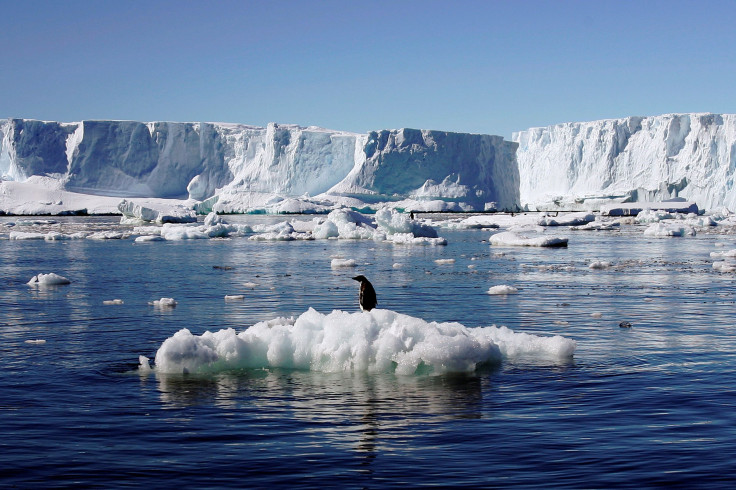Antarctica's Vast Network Of Flowing Meltwater More Extensive Than Previously Thought

Antarctica's giant ice shelves, which ring the entire continent, act as buttresses and help hold back the land-bound glaciers behind them — glaciers that, if they flow into the ocean, could cause a catastrophic rise in sea levels. Studies have already shown that in response to the inexorable rise in global temperatures — fueled primarily by the greenhouse gases humans are pumping in the atmosphere — many glaciers in Antarctica are melting much faster than previously believed.
There is one factor whose impact on Antarctica's glaciers and ice shelves is still not widely understood — the seasonal streams of meltwater that crisscross the continent, freezing over in winters. Two new studies published Wednesday in the journal Nature have now revealed that these seasonal flows of meltwater are much more extensive than previously thought, triggering concerns over their impact on the continent's already unstable ice shelves.
Read: West Antarctica’s Glaciers Retreating Faster Than Expected
"This is not in the future—this is widespread now, and has been for decades,” Jonathan Kingslake, a glaciologist at Columbia University’s Lamont-Doherty Earth Observatory, and lead author of one of the studies, said in a statement. “I think most polar scientists have considered water moving across the surface of Antarctica to be extremely rare. But we found a lot of it, over very large areas."
The studies, based on a continent-wide survey, reveal the presence of nearly 700 seasonal systems of interconnected ponds, channels and streams — some of which run as far as 75 miles. Many of these streams start as close as 375 miles from the South Pole, and at 4,300 feet above sea level — at temperatures scientists hitherto believed liquid water was unlikely to exist.

Although none of the mapped drainages are actually new, their very presence suggests that Antarctica may be much more vulnerable to melting than it was previously believed. This is because running water, even if it's confined primarily to the surface, could eventually fracture the continent's floating ice shelves.
"Antarctica is already losing ice, but the direct effects of meltwater, which generally refreezes in winter, are probably negligible for now," Columbia University's Earth Institute explained in the statement. "The concern among glaciologists is that this could change in the future. Most loss right now is taking place near the edges, where giant, floating shelves of ice attached to the land are being eroded from underneath by warming ocean currents."
However, the other study suggests that the drainage system on West Antarctica’s 695-square-mile Nansen Ice Shelf may actually be helping keep the shelf together over the past 100 years by draining excess meltwater during the summer and dumping it into the ocean.
But, as the authors of the studies clarify, it is still not entirely clear how the presence of these streams is relevant to sea-level rise predictions, and whether there are even more melt zones lurking beneath the surface.
Over the past 100 years, global average sea levels have risen nearly 7 inches. Some estimates suggest that if Antarctica’s ice sheet melts completely, it would raise sea levels by over 200 feet — enough to flood the planet's land masses. Although this is not something that is likely to happen anytime soon, several recent studies have pointed toward a warming trend on the continent.
"Looking forward, it will be really important to work out how these systems will change in response to warming, and how this will affect the ice sheets," Kingslake said in the statement.
© Copyright IBTimes 2024. All rights reserved.





















